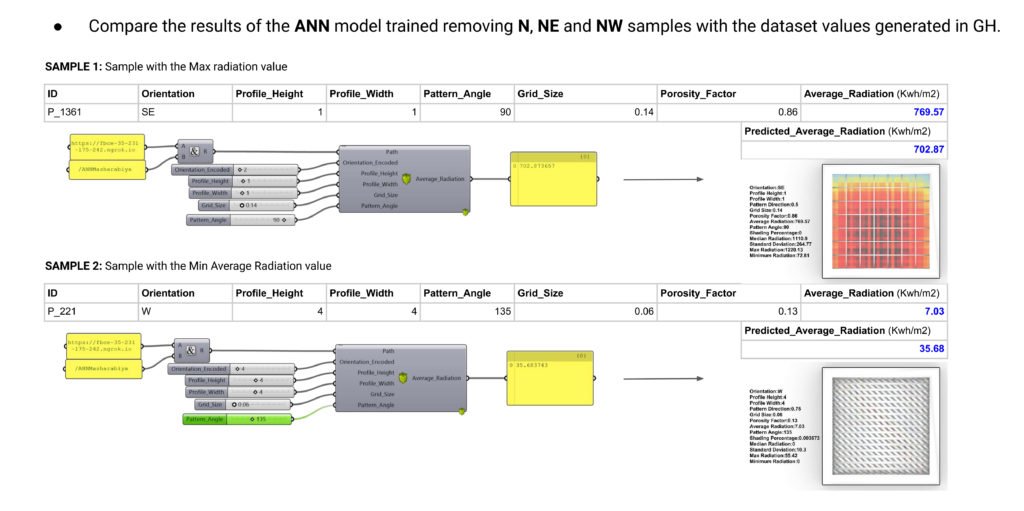
ABSTRACT
Mashraraya is an essential element of Islamic architecture, and its significance surpasses the aesthetics and symbolism. It serves as more than just a decorative feature, protecting the interior spaces from harsh weather by providing shading and encouraging natural ventilation. It also offers privacy and can be used as a structural element.
The project’s objective is to test and train different regression machine learning models to predict the performance of the Mashrabiya as a sun shading and privacy protector based on the geometry features and weather conditions in our case of the city of Tripoli in Lebanon.
PSEUDO-CODE
The different Mashrabiya patterns are designed in Grasshopper and evaluated their performance using Ladybug. Radiation values are used to measure the sun shading protection, while the porosity percentage measures privacy. The data collected is used to train a machine-learning to predict performance.
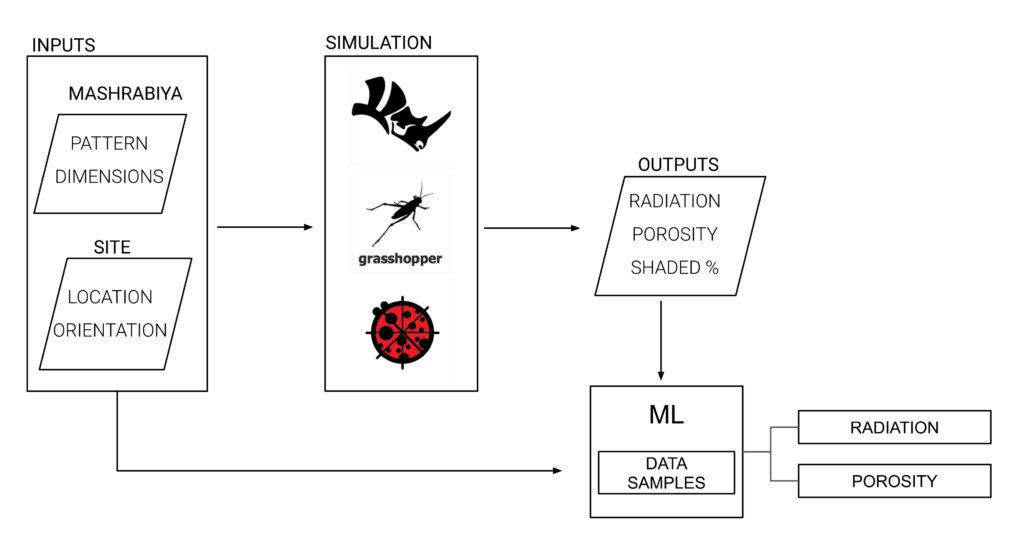
DATA GENERATION
The data generation process takes inspiration from William Samuels’ study, “Performance and Permeability,” published in 2011. The study presents a mathematical formula that defines the ideal geometric design for the Mashrabiya. Using this study as a reference, we replicated a one-square-meter screen sample and its corresponding geometry. To reduce the complexity of geometric features, we simplified the design. This allowed us to generate data with a focus on essential geometric elements.
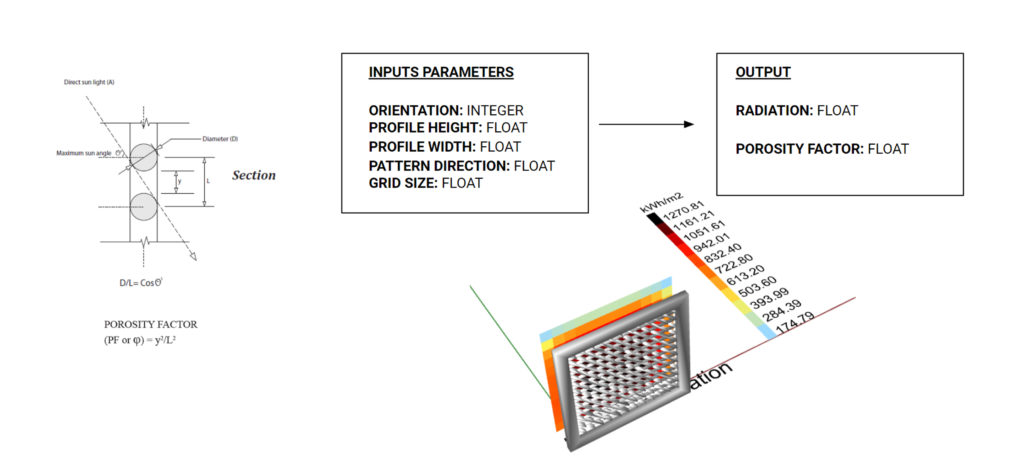
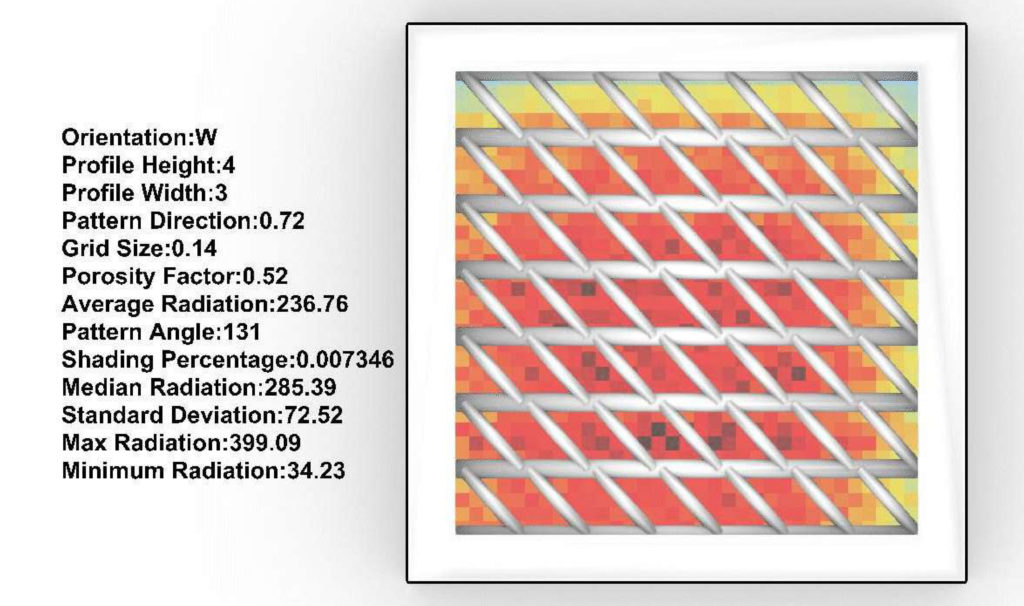
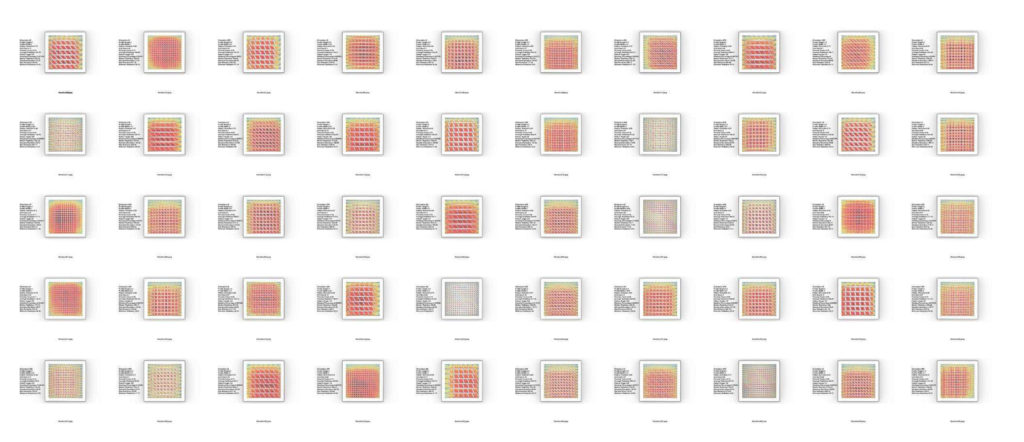
DATA VISUALIZATION
Data visualization plays a crucial role in validating the accuracy of generated data and comprehending the quality and interrelation of dataset features. As part of this process, we run a Principal Component Analysis (PCA) to analyze the correlation of each feature. By conducting PCA, we can determine which features can be discarded without compromising and simplifying the machine learning training process.
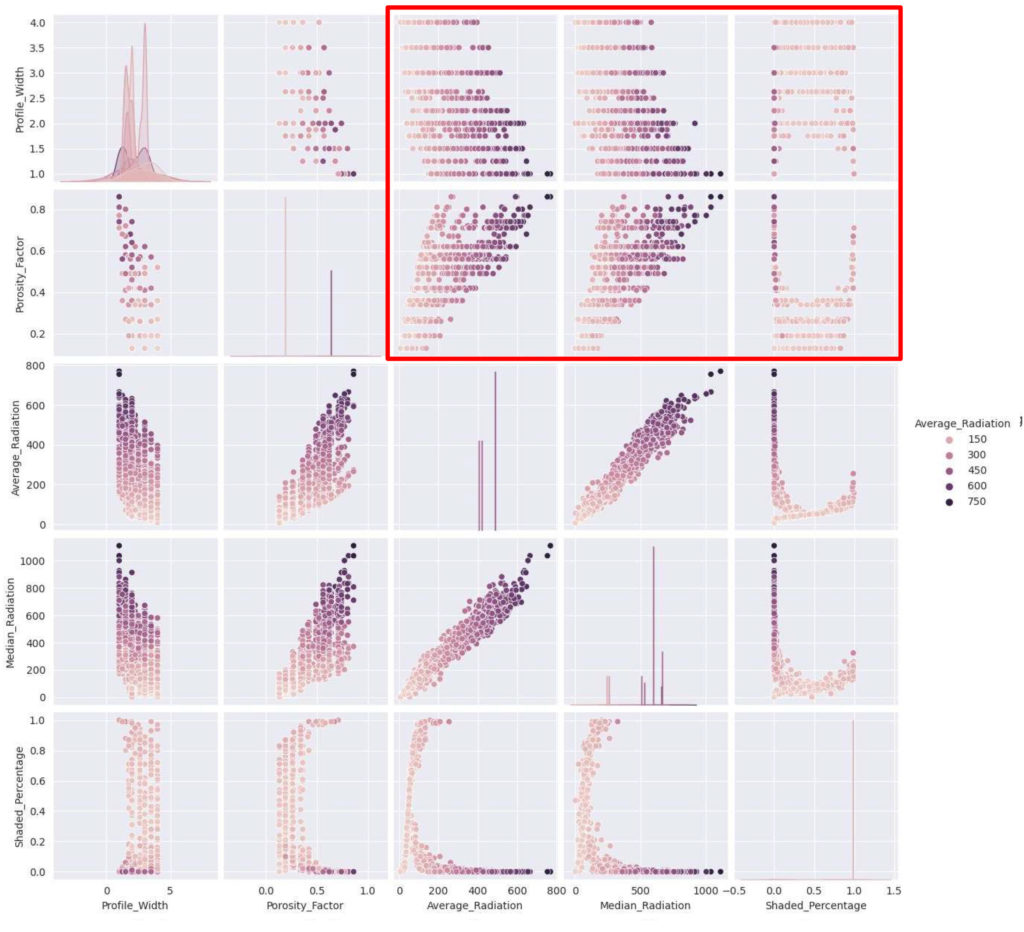
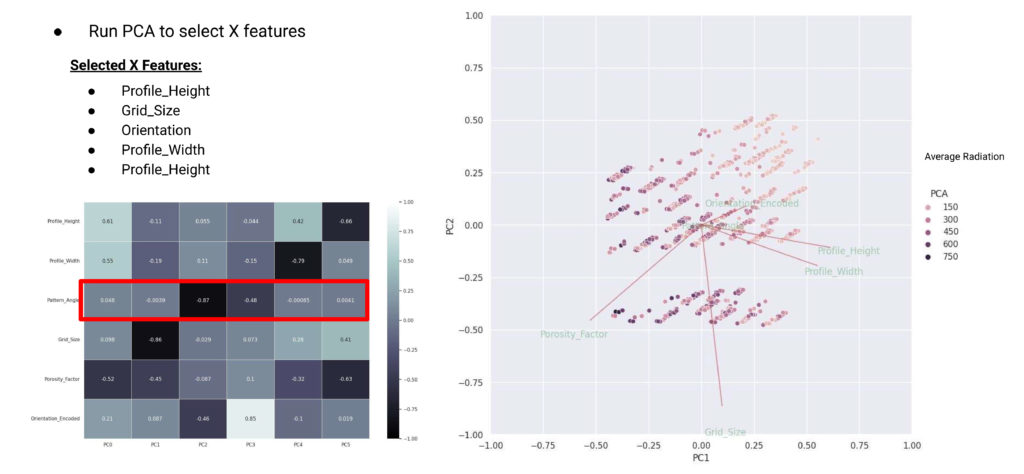
MACHINE LEARNING PROCESS
Once the relevant geometric features were identified, we conducted tests using the Shallow regression model with three target predictions: average, median, and shaded percentage. To determine that average radiation gives better results.
Subsequently, we evaluated various regression models to conclude that the Adversarial Neural Network Regression model produced the most accurate results. However, we excluded samples where the pattern faced north, northeast, and northwest to further refine the model’s performance. These particular samples introduced noise to the results, and eliminating them improved the model’s accuracy.
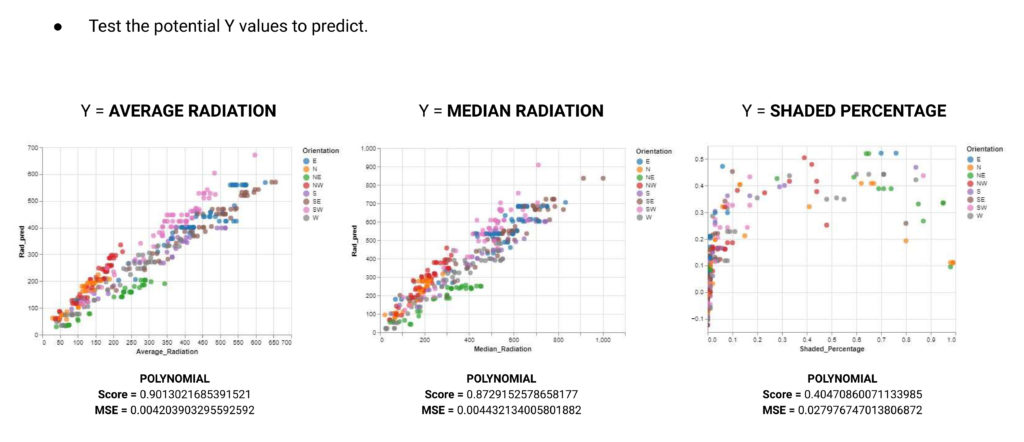
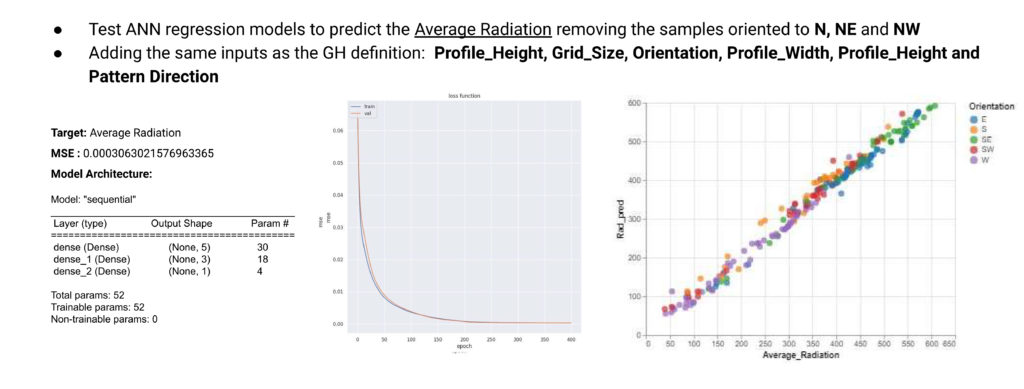
RESULTS VISUALIZATION
Finally, we brought the machine learning predictions back to Grasshopper using the Hops component. The results demonstrated a high level of accuracy overall. However, it should be noted that there was a slightly lower precision for the most extreme cases, as shown in the image.
